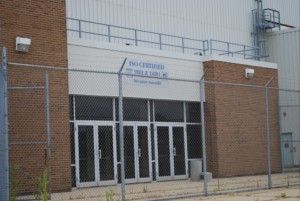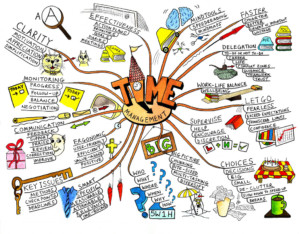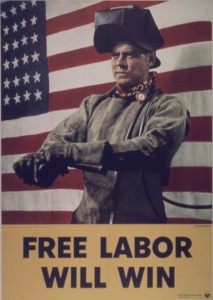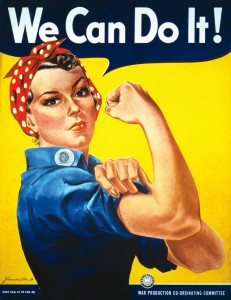 A good manufacturing documentary on Netflix is American Factory. This movie follows an American automotive plant that closed some time ago, and was reopened by a Chinese car glass manufacturer. It documents the differences and problems between employees and management in general and the cultural clashes between Chinese management’s and American workers’ expectations in particular. It is in fact very similar to the 1986 movie Gung Ho, except Gung Ho is a fictional comedy, whereas American Factory is as real as it gets. Good to watch! It also won the Oscar for “Best Documentary” in 2020.
A good manufacturing documentary on Netflix is American Factory. This movie follows an American automotive plant that closed some time ago, and was reopened by a Chinese car glass manufacturer. It documents the differences and problems between employees and management in general and the cultural clashes between Chinese management’s and American workers’ expectations in particular. It is in fact very similar to the 1986 movie Gung Ho, except Gung Ho is a fictional comedy, whereas American Factory is as real as it gets. Good to watch! It also won the Oscar for “Best Documentary” in 2020.
Psychology
Fictional Movie on US-Japan Automotive Culture Clash – Gung Ho

Recently I watched a few feature-length movies about automotive plants America. The first one is Gung Ho, a fictional comedy from 1986 featuring Michael Keaton. The movie shows a Japanese car maker purchasing a closed-down plant in the USA, and lots of cultural clashes that threaten to close down the plant again. While not Academy Award-worthy, it offers insights into the cultural differences between Japanese and US Industry, although often exaggerated on both sides for comical effect.
Creative Provocation, Reverse Brainstorming, and Analogy
 After showing you the details of a few basic creativity techniques, I now get to my most favorite one: creative provocation! It is a bit more advanced, but I had huge successes with this one. It is part of a group of techniques that alter the initial question to foster more creativity. I will also show you reverse brainstorming.
After showing you the details of a few basic creativity techniques, I now get to my most favorite one: creative provocation! It is a bit more advanced, but I had huge successes with this one. It is part of a group of techniques that alter the initial question to foster more creativity. I will also show you reverse brainstorming.
Fishbone Diagrams and Mind Maps
 A lot of lean problem solving requires creativity. There are many creativity techniques available to help generate ideas for problem solving. In my last post I presented brainstorming, which is a freewheeling creativity technique. In this post I will show you some creativity techniques that have a more structured approach. These include mind maps and fishbone diagrams. Both can be used in groups, but they are also helpful if you need to tackle problems on your own.
A lot of lean problem solving requires creativity. There are many creativity techniques available to help generate ideas for problem solving. In my last post I presented brainstorming, which is a freewheeling creativity technique. In this post I will show you some creativity techniques that have a more structured approach. These include mind maps and fishbone diagrams. Both can be used in groups, but they are also helpful if you need to tackle problems on your own.
Leading with Confidence
JR: Training within Industry – Job Relations
 Job Relations (JR) is one of the modules of the original Training within Industry (TWI) program. It was actually developed at Harvard using case studies, and for its time was groundbreaking in its idea that leadership can be learned! Like most TWI modules, it is sensible and useful. As with most TWI programs, it is focused on the front lines of the shop floor, and designed for first-line and second-line supervisors. The module is about good shop floor leadership.
Job Relations (JR) is one of the modules of the original Training within Industry (TWI) program. It was actually developed at Harvard using case studies, and for its time was groundbreaking in its idea that leadership can be learned! Like most TWI modules, it is sensible and useful. As with most TWI programs, it is focused on the front lines of the shop floor, and designed for first-line and second-line supervisors. The module is about good shop floor leadership.
While the program dates from World War II, it has lost none of its relevance, and can still help modern-day shop floor managers in becoming better leaders. The steps are not rocket science, but good common sense, and described with a clarity and brevity unusual for a management book. Below is a summary, mostly condensed from the “Job Relations 10 Hour Sessions Outline and Reference Material.” This is the third in a series of five posts on TWI.
Training within Industry – TWI – Oldies but Goldies
 Training within Industry – or TWI for short – was a US program during World War II. It significantly improved industrial production and helped the Allies to win the war. While the ideas date to the 1940s, they are still very relevant. In my view, they are pure gold if you have to manage a shop floor. It is to me the best overarching system for training and managing workers, and it significantly influenced Toyota.
Training within Industry – or TWI for short – was a US program during World War II. It significantly improved industrial production and helped the Allies to win the war. While the ideas date to the 1940s, they are still very relevant. In my view, they are pure gold if you have to manage a shop floor. It is to me the best overarching system for training and managing workers, and it significantly influenced Toyota.
While technology has changed a lot since 1945, people have not. The methods of TWI still work, and can really help you to improve. Even better, the original US government documents from 1945 are all in public domain. Let me introduce you to TWI. This is the first in a series of five posts on TWI.
Heroes, Firefighting, and Corporate Culture
 Heroes save the day. Heroes turn around the disaster and rescue the puppy from the burning building. Heroes are admired, and everybody wants to be one. Everybody wants a hero when they need one.
Heroes save the day. Heroes turn around the disaster and rescue the puppy from the burning building. Heroes are admired, and everybody wants to be one. Everybody wants a hero when they need one.
But what about the people who prevent the need of a hero? What about the people that make sure the disaster never happens? What kind of people do you really need in your company?

